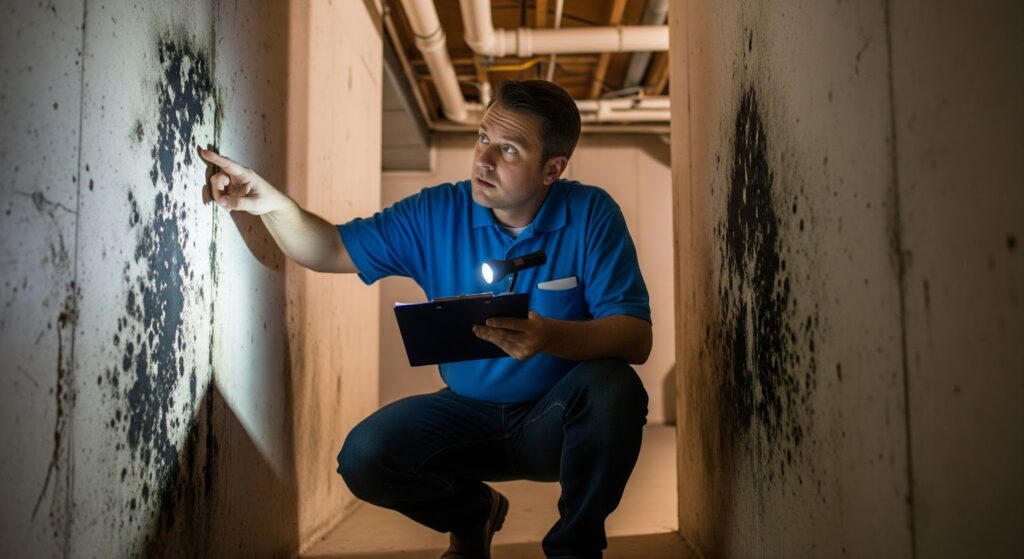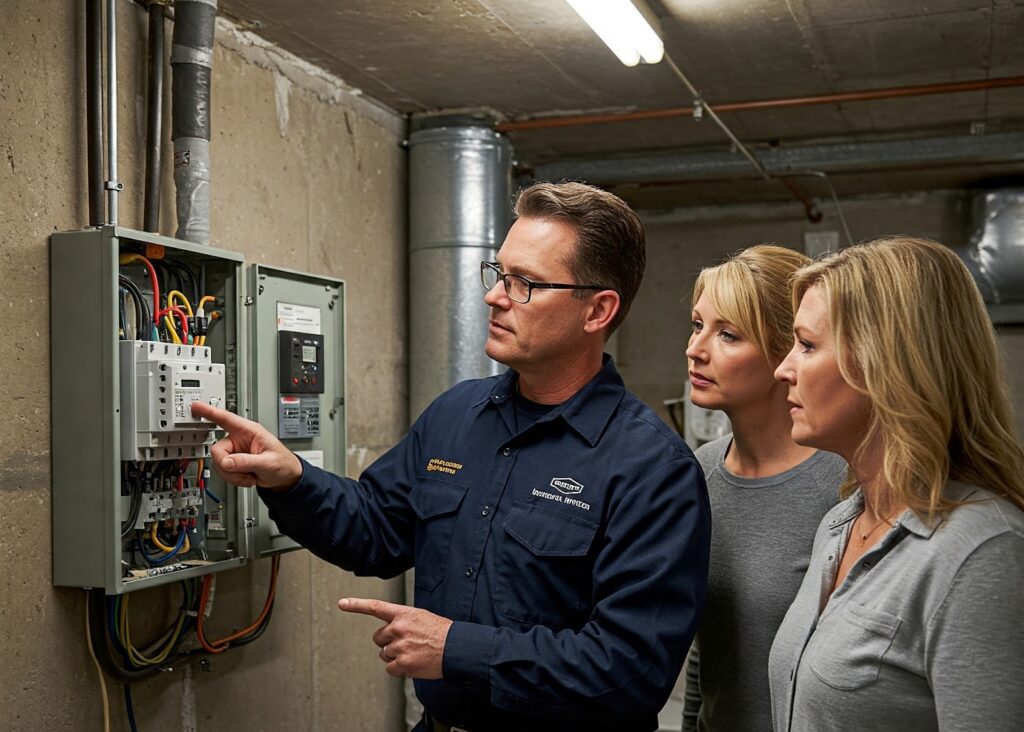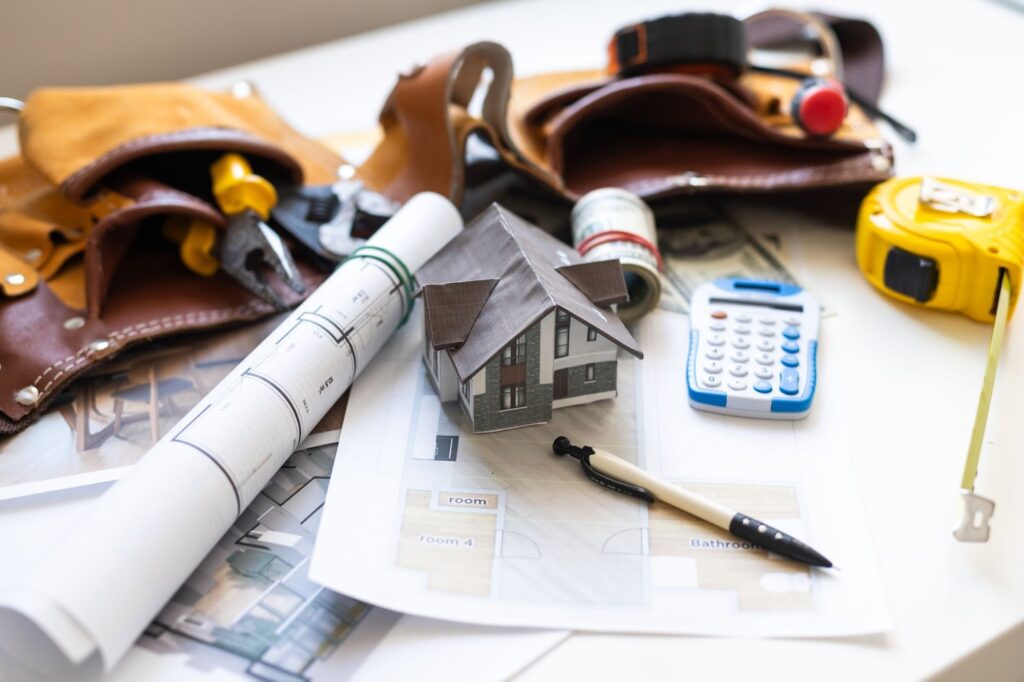
Unexpected Repairs Found During Home Inspection? An Alberta Seller’s Guide to Disclosure, Negotiation & Solutions
Selling your home in St. Paul, Bonnyville, or anywhere in the Lakeland region is an exciting prospect, but let’s be honest, the home inspection phase often brings a wave of anxiety. What hidden issues might the inspector uncover? It’s a common worry, and for good reason. Unexpected repair needs discovered during inspection are frequent occurrences and, if not handled correctly, can complicate or even derail your sale. How do you navigate potentially costly surprises, understand your legal disclosure obligations in Alberta, and manage what can sometimes be tense negotiations with buyers?
This guide is your roadmap. We’ll walk Alberta home sellers through the common types of unexpected repairs, explain your crucial disclosure duties, explore the options you have for responding to buyer requests, share effective negotiation strategies, and highlight the importance of having professionals like your Century 21 Poirier REALTOR® and a real estate lawyer on your side. Knowing what to expect and how to respond empowers you to handle unexpected home repairs smoothly and confidently during the selling process of your property in Alberta.
The Inspection Gauntlet: Common Surprises for Alberta Sellers

Think of a home inspection less as a pass/fail test and more as a detailed physical check-up for your property. A qualified inspector visually examines major systems and components, providing an objective report on their condition. While a well-maintained home often fares better, surprises can still pop up. Being aware of common findings helps you prepare.
Major Systems Under Scrutiny
Inspectors pay close attention to the core systems that keep a home safe and functional:
- Roofing: Alberta’s weather puts roofs to the test. Common issues include aged or damaged shingles, problems with flashing around vents or chimneys, and poor attic ventilation or insulation, which can lead to costly water damage or mould.
- Foundation: Essential for stability, inspectors look for significant cracks, bowing walls, signs of settlement, or water intrusion indicators. Alberta’s freeze-thaw cycles add extra stress.
- Electrical: Safety is the prime concern. Outdated wiring (knob-and-tube, aluminum), overloaded panels, improper grounding, missing GFCIs in wet areas, or exposed wires are common flags, especially in older homes.
- Plumbing: Leaks (even hidden ones), slow drains, running toilets, low water pressure, corroded pipes, or aging water heaters are frequently noted. The type of pipe material might also be mentioned. A separate sewer scope inspection is often wise for main drain lines.
- HVAC (Heating, Ventilation, Air Conditioning): Inspectors check the furnace and AC (if present) for functionality. Dirty filters, poor airflow, system inefficiency (often due to age), or malfunctioning parts are common findings.
Environmental Concerns Often Overlooked

Beyond the main systems, environmental factors can lead to unexpected repair needs:
- Mould: Almost always caused by excess moisture from leaks or poor ventilation. It poses potential health risks and often requires professional testing and remediation.
- Radon: This invisible, odorless radioactive gas occurs naturally from soil in many parts of Alberta. It’s a long-term health risk. Testing is recommended by health authorities, and mitigation systems are needed if levels exceed guidelines.
- Asbestos: Found in various materials in homes built before the 1990s. It’s dangerous only if disturbed, releasing fibers. Identifying and removing it requires certified professionals following strict provincial regulations.
Rural Realities: Septic & Well Issues (St. Paul/Bonnyville Acreages)
For acreage properties common around St. Paul and Bonnyville, septic and well systems need specific attention:
- Septic Systems: Standard inspections don’t cover these deeply. A specialized septic inspection checks the tank, baffles, drain field, pumps, and alarms. Common issues include clogged lines, failing drain fields (which can be very expensive to fix!), tank damage, or undersized systems.
- Water Wells: Inspections involve testing the water flow rate (yield) and quality (checking for bacteria, nitrates, minerals). Alberta Health Services provides guidance and testing resources. Treatment systems might be necessary depending on results.

Seller Beware: Your Disclosure Duties in Alberta
In Alberta, the general principle is “buyer beware” (caveat emptor), meaning buyers are responsible for doing their homework (like inspections). However, this doesn’t let sellers off the hook entirely. You have specific legal duties when it comes to disclosing certain property defects.
Patent vs. Latent Defects: What’s the Difference?
- Patent Defects: These are obvious issues discoverable during a reasonable inspection – think a cracked windowpane. Sellers generally don’t have to point these out.
- Latent Defects: These are hidden issues not easily found during a typical inspection.
Material Latent Defects (MLDs): The Critical Exception
This is where seller disclosure becomes mandatory. A Material Latent Defect (MLD) is a hidden defect that meets specific criteria. According to the Real Estate Council of Alberta (RECA), it’s a physical defect not discoverable via reasonable inspection that makes the property dangerous, potentially dangerous, unfit for habitation, or unfit for the buyer’s stated purpose. It also includes defects that are extremely costly to repair, properties subject to certain official notices, or lacking required permits.
Crucially, the standard Alberta Real Estate Association (AREA) purchase contract may define MLD slightly differently, potentially including defects affecting the property’s use or value. This difference highlights why legal advice is important.
Bottom line: As a seller, you must disclose any MLDs you are actually aware of. This duty exists even if the buyer doesn’t inspect, and even if you’re selling the property “as-is”.
The High Cost of Hiding Known Issues
Trying to conceal a known MLD can be considered fraudulent misrepresentation. Failure to disclose known MLDs can lead to serious consequences after the sale, including lawsuits for damages or even cancellation of the sale.
Here’s a critical point: If a buyer’s inspection uncovers an MLD you genuinely didn’t know about, but the buyer then walks away from the deal because of that issue, you now have knowledge of that defect. You are legally obligated to disclose it to all future potential buyers. This often makes finding a resolution with the current buyer the smarter path.
Specific Rules: Radon & Stigmas
- Radon: If you’ve done a long-term radon test (90+ days) showing results at or above 200 Bq/m3, you must disclose this, unless you install a proper mitigation system before listing and a subsequent test confirms lower levels.
- Stigmas: Things like a death on the property or proximity to crime are generally not considered MLDs in Alberta, and disclosure isn’t typically required unless a buyer asks directly. If asked, answer truthfully.
After the Report: Choosing Your Response Strategy to Repair Requests

So, the inspection report is in, and the buyer has requested repairs or compensation. What now? Remember, unless it’s an undisclosed known MLD, you generally aren’t legally forced to fix things. Your response depends on your situation, the market, and your desire to close the deal. Here are your main options:
Option 1: Fix It Now (Pre-Listing Repairs)
- Pros: You control the cost, contractor choice, and quality. It prevents surprises later and can be a good marketing point.
- Cons: You spend money upfront without guarantee of return; might fix things a buyer wouldn’t have cared about.
Option 2: Fix It Later (Post-Inspection, Pre-Closing Repairs)
- Pros: Directly addresses the buyer’s concern, potentially saving the deal.
- Cons: Can be stressful under a closing deadline. Potential for disputes over work quality. Requires a very detailed written agreement (amendment) specifying exactly what, who, how, when, and proof of completion.
Option 3: Offer Compensation (Credit or Price Reduction)
- Pros: Often the simplest and fastest solution. Avoids repair hassles for you; buyer manages repairs to their liking. Shifts repair execution risk to the buyer.
- Cons: You net less money. Buyer’s estimate might be high. Lender might have limits on credits.
Option 4: Stand Firm (Refusing Repairs)
- Pros: Costs you nothing upfront.
- Cons: High risk the buyer walks away (if they have an inspection condition). If an MLD was found, you now have to disclose it going forward. Difficult position in a buyer’s market.
Option 5: Sell “As-Is” (What it Really Means in Alberta)
- Implications: Signals you won’t make repairs; common for fixer-uppers. Buyers expect a lower price.
- CRITICAL CAVEAT: Selling “as-is” DOES NOT negate your duty to disclose known Material Latent Defects. This is a vital legal point in Alberta.
- Pros: Simplifies the process for sellers unable/unwilling to do repairs.
- Cons: Usually fetches a lower price, smaller buyer pool, potential financing hurdles for buyers, and still requires MLD disclosure.
Smart Negotiations: Handling Repair Requests Like a Pro

To successfully negotiate home inspection repairs as a seller in Alberta, you’ll need a strategic approach and clear communication skills.
First Steps: Acknowledge & Analyze
- Respond professionally and promptly. Don’t get defensive.
- Immediately loop in your Century 21 Poirier REALTOR®. They provide crucial market context and strategic advice.
Prioritizing Requests: What Really Matters?
Focus negotiations on significant issues – the “Significant Four”:
- Safety Hazards: Electrical problems, structural instability, high radon, active mould.
- Structural Problems: Foundation damage, major roof leaks.
- Systems Failures: Non-working furnace, major plumbing failures.
- Serious Water Issues: Active leaks, significant moisture intrusion.
What NOT to Sweat: Cosmetic vs. Essential Repairs
Generally, be less inclined to negotiate on what not to fix when selling a house:
- Minor cosmetic flaws (paint chips, worn carpet).
- Normal wear and tear expected for the home’s age.
- Components that are old but still functioning safely (unless misrepresented).
- Upgrades to meet current building codes (usually buyer’s future responsibility).
- Items that were obvious or already disclosed before the offer.
Know Your Market: Leverage in St. Paul & Bonnyville
Market conditions heavily influence negotiations:
- Seller’s Market: You have more leverage to refuse minor requests or offer smaller concessions. But ignoring major safety issues or known MLDs is still risky.
- Buyer’s Market: You’ll likely need to be more flexible and accommodating on repairs or credits to keep the buyer interested. Your local REALTOR® can advise on current conditions in St. Paul and Bonnyville.
Finding Middle Ground: Compromise & Tactics
- Get your own quotes from qualified local contractors (in the St. Paul or Bonnyville area) to verify costs and counter unreasonable buyer estimates. Facts strengthen your position.
- Be open to compromise. Offer a credit instead of doing repairs, or vice versa. Counter-offer based on your findings.
- Consider other concessions: maybe offer flexibility on the closing date or include an appliance in exchange for the buyer dropping a repair request.
Document Everything: The Power of Written Amendments
Any agreement regarding repairs, credits, or price changes must be put in writing as a formal amendment or addendum to the purchase contract. Be crystal clear and specific. Ensure both parties’ lawyers review it before signing.
Budgeting for the Unexpected: Understanding Repair Costs in Alberta

Estimating repair costs is tricky because they vary significantly. Relying on generic online calculators is often inaccurate.
Why Costs Vary So Much in Alberta
Many factors influence the final price tag:
- Age & Condition of Home
- Materials Used
- Scope & Complexity of Work
- Labour Costs (vary regionally and seasonally)
- Property Location (urban vs. rural)
- Required Permits
- Specific Climate Impacts (e.g., hail damage repairs)
Ballpark Figures for Major Repairs (Use Local Quotes!)
These are very general ranges – always get multiple quotes from contractors operating in the St. Paul or Bonnyville area for accurate pricing:
- Roofing: Minor repairs ($500-$2k+). Full asphalt replacement ($6k-$12k+ average home, potentially much higher for large/complex roofs).
- Furnace Replacement: $4k – $12k+ depending on efficiency, size, brand.
- Foundation: Minor crack seals ($500-$2k+). Major work can be $10k-$50k+.
- Plumbing: Small leak ($150-$500+). Repiping (thousands). Sewer line replacement ($2.5k – $30k+). Septic drain field (can be $10k – $60k+).
- Electrical Panel Upgrade: $2k – $10k+.
- Mould Remediation: Highly variable; professional quote needed.
- Radon Mitigation: Typically $2k – $3k for standard system.
- Asbestos Abatement: $2k-$10k+ Costs vary widely; a professional quote is essential.
Potential Financial Help for Seniors
Eligible seniors in Alberta might qualify for the Seniors Home Adaptation and Repair Program (SHARP) grant for certain essential repairs, subject to program limits and criteria.
You’re Not Alone: Lean on Your Professional Team

Selling a home involves complex steps; building a support team is a smart strategy.
Your Century 21 Poirier REALTOR®: Your Strategic Advisor
Your agent is invaluable for providing local market insight (St. Paul/Bonnyville), pricing strategy, inspection guidance, negotiation expertise, access to a professional network, and ensuring you’re aware of disclosure obligations.
Your Real Estate Lawyer: Your Legal Shield
A lawyer provides essential legal advice (especially on disclosure/MLDs), drafts and reviews contracts and amendments, handles title issues, assists in dispute resolution, and manages the legal aspects of closing.
You need both – the REALTOR® for market strategy, the lawyer for legal protection.
Real-World Examples: St. Paul & Bonnyville Scenarios

Let’s apply this to situations relevant to our local area:
Scenario 1: The Aging (but Working) Furnace in St. Paul
- The Issue: A buyer’s inspection on a 1990s St. Paul home flags the 25+ year old furnace. It works, but the buyer wants it replaced ($5k credit requested) due to age and potential winter failure. Market is balanced.
- The Strategy: Seller confirms it’s operational (not technically a defect). Consults REALTOR®. Offers a smaller credit ($1,500) towards future replacement, acknowledging the buyer’s concern but arguing it’s not currently broken.
Scenario 2: The Surprise Septic Problem near Bonnyville
- The Issue: A specialized septic inspection on a Bonnyville acreage reveals a failing drain field needing $8k remediation (potentially an MLD). Market slightly favors sellers.
- The Strategy: Seller consults lawyer (MLD implications) & REALTOR®. Knows non-disclosure is risky if deal collapses. Offers a credit/price reduction (maybe starts negotiation at $7k due to market leverage) as the cleanest way to resolve, shifting repair burden to buyer.
Conclusion: Selling Smoothly Despite Repair Hurdles

Home inspections can feel like a major hurdle, but they don’t have to derail your sale. Knowledge truly is power for Alberta home sellers.
Remember these key steps:
- Anticipate: Be aware of common issues.
- Disclose: Understand your legal duty regarding Material Latent Defects – honesty prevents future pain.
- Strategize: Weigh your options carefully (fix, credit, refuse, “as-is”).
- Negotiate: Approach talks professionally, focus on significant issues, use data, and document agreements.
- Budget: Get local quotes to understand true costs.
- Get Help: Rely on your Century 21 Poirier REALTOR® for market strategy and your lawyer for legal protection.
By being prepared, transparent, and working with experienced local professionals, you can navigate inspection findings effectively and achieve a successful, smooth property sale in St. Paul, Bonnyville, and the surrounding Lakeland area.
Facing inspection worries or planning to sell your home in the Lakeland? The experienced team at Century 21 Poirier understands the local market inside and out. We can provide expert guidance through every step of the selling process, including navigating inspection results and negotiations. Contact us today for personalized advice.
Frequently Asked Questions (FAQ)

- Q: Do sellers have to fix everything on an inspection report in Alberta?
A: No. Generally, sellers aren’t legally obligated to fix items unless it’s a known Material Latent Defect they failed to disclose. Negotiation determines what, if anything, gets repaired or compensated for. - Q: What’s the difference between a latent defect and a material latent defect in Alberta?
A: A latent defect is hidden. A material latent defect is hidden AND makes the property dangerous, uninhabitable, unfit for purpose, or significantly impacts its use/value (per RECA/AREA definitions). Sellers MUST disclose known MLDs. - Q: Is it better to offer a credit/price reduction or do the repairs myself?
A: It depends. Credits are often simpler and shift risk to the buyer, but mean less net money. Doing repairs gives you control but involves hassle and potential disputes. Discuss pros/cons with your REALTOR®. - Q: Can I refuse all repair requests from the buyer?
A: You can, but it carries the risk of the buyer walking away (if they have an inspection condition). If a true MLD was discovered, you’d then have to disclose it to future buyers. Market conditions also influence this. - Q: What happens if the buyer’s inspection finds a major issue I genuinely didn’t know about?
A: If the buyer withdraws due to the issue (and it qualifies as an MLD), you now know about it and are legally obligated to disclose it to all subsequent potential buyers. - Q: Does selling my house “as-is” in Alberta mean I don’t have to disclose known problems?
A: Absolutely NOT. Selling “as-is” means you won’t perform repairs, but you STILL have a legal duty to disclose any known Material Latent Defects. - Q: How much should I expect a buyer to ask for in repairs or credits after an inspection?
A: It varies greatly. Focus negotiation on significant issues (safety, structure, systems) and get your own quotes to establish fair value. - Q: Who verifies that agreed-upon repairs have been done correctly before closing?
A: This should be defined in the written amendment agreement. Options include buyer walk-through, receipts/warranties, or sometimes a re-inspection. - Q: Do I have to disclose if my house tested high for radon?
A: Yes, if a long-term test shows levels at or above 200 Bq/m3, disclosure is required, UNLESS you install mitigation pre-listing and re-test confirms lower levels. - Q: What are typically the most expensive unexpected repairs sellers face in Alberta?
A: Major issues involving the roof, foundation, extensive mould or asbestos remediation, main plumbing/sewer line replacements (especially rural septic systems), and sometimes complete electrical rewiring tend to involve the highest costs.

categories
Archive
- October 2025
- September 2025
- June 2025
- March 2025
- January 2025
- October 2024
- July 2024
- May 2024
- November 2023
- June 2023
- March 2023
- November 2022
- October 2022
- July 2022
- May 2022
- March 2022
- January 2022
- December 2021
- October 2021
- August 2021
- July 2021
- April 2021
- March 2021
- February 2021
- January 2021
- December 2020
- November 2020
- October 2020
- September 2020
- August 2020
- July 2020
- June 2020
- May 2020
- April 2020
- March 2020
- February 2020
- January 2020
- December 2019
- November 2019
- October 2019
- September 2019
- August 2019
- July 2019
- June 2019
- May 2019
- April 2019
- March 2019
- January 2019
- December 2018
- November 2018
- October 2018
- September 2018


